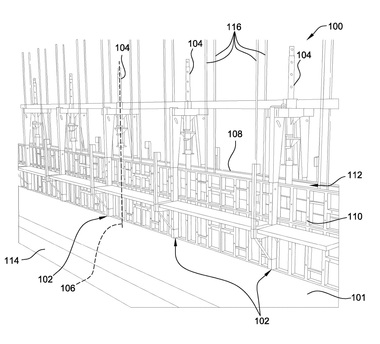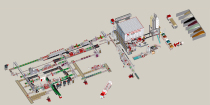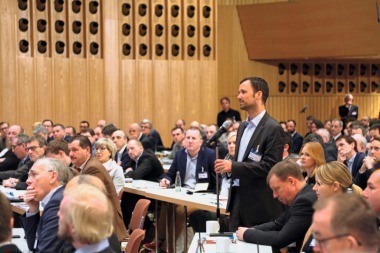Potentials for future infrastructural projects
The German road infrastructure comprises about 13,000 km of federal motorways and 39,000 km of main roads. In future, the mobility of goods and people will be a cornerstone for ensuring the continued performance of our economy [1]. Yet the requirements for road construction are becoming increasingly sophisticated, and this trend is likely to continue. Concrete road pavements play a key role in this field, and a growing proportion of federal motorways is built in concrete. However, the roads of the future need to become more durable, safe, resource-efficient, environmentally friendly, and cost-effective. In addition, the road infrastructure will have to respond to the future megatrends of individualization, connectivity, urbanization, and neo-ecology [2]. Digital networking and connectivity will thus give rise to an extended range of innovative mobility services. For instance, vehicles will tend to be used, rather than owned, in future passenger and goods transport scenarios, which will open up opportunities for new business models. Yet such mobility concepts will require high availability while enabling smooth changes between different modes of transport. This will pose challenges not only to infrastructural planning but also to the road infrastructure as such, which will have to evolve into a high-tech platform. However, conventional approaches to road construction can hardly keep up with the rapid advances in vehicle technologies [3]. In Germany, the joints of non-reinforced concrete road pavements, for instance, are one of the weakest parts because the roads of tomorrow will have to meet increasingly demanding requirements in terms of evenness, low noise, grip, strength, and availability. What we will require are durable, dimensionally stable, crack-free top courses with specific functionalities to accommodate future vehicle, communications and sensor technologies. This is where continuously reinforced concrete road pavements could be helpful, but a high quality standard must be ensured when it comes to pouring no-slump concrete into the reinforced lane applying a slip-form paving process. In addition, care must be taken to ensure that the potential provided by offset slip-form pavers is fully utilized such that the required energy supply and communications infrastructure can be installed alongside the road as part of the construction activity. This approach will require reliable manufacturing, conveying, installation and finishing processes. Aspects related to raw materials (scarcity and quality variations of the raw materials used for concrete) and process engineering (complex road construction process chains, partly including some highly automated but hardly interconnected equipment components) require improvements specific to the respective material and construction method. This is why the “Betonfahrbahn 4.0” (Concrete Road Pavement 4.0) collaborative research project [4] is dedicated to establishing reliable, reproducible processes for producing and installing concrete for use in road pavements. This is where the rheological characteristics of concrete are crucial not only during mixing, but also when installing the concrete using a slip-form paver and finishing the road surface [5]. Ultimately, the enormous potential provided by slip-form pavers will be utilized fully only if we succeed in producing concrete for road construction whose composition, compactibility, and workability are perfectly aligned with the specific installation method and situation while always providing the same consistency.
Acknowledgements
The author thanks the Federal Ministry of Transport and Digital Infrastructure for funding this collaborative research project, as well as the Federal Highway Research Institute (BASt) for its consistent technical and administrative support provided throughout the “Betonfahrbahn 4.0” project. In close coordination with Dr. Wieland, head of the department of concrete construction at the BASt, the project partners from science and the construction and engineering industries are striving to establish more reliable, reproducible concrete construction processes to overcome the complex challenges that road construction poses in terms of raw material flows, environmental impact, and available technologies, to name but a few areas. The author thus expresses his gratitude to the construction companies involved in the project, namely Heinz Schnorpfeil Bau GmbH and Otto Alte-Teigeler GmbH, and to the participating construction equipment manufacturers, Liebherr-Mischtechnik GmbH and Wirtgen GmbH, as well as to the engineering company CAVEX and Lehmann + Partner GmbH overseeing the valuation of road infrastructure assets. The IWB’s research focus is on the concrete production process in order to ensure the workability of fresh concrete during the entire slip-form paving process. Thus, the author also thanks Messrs. Dr. Baumert, Hampel, Lisin and Lazik, as well as Ms. Hein, whose responsibility is to assess the environmental impact of concrete construction methods.







